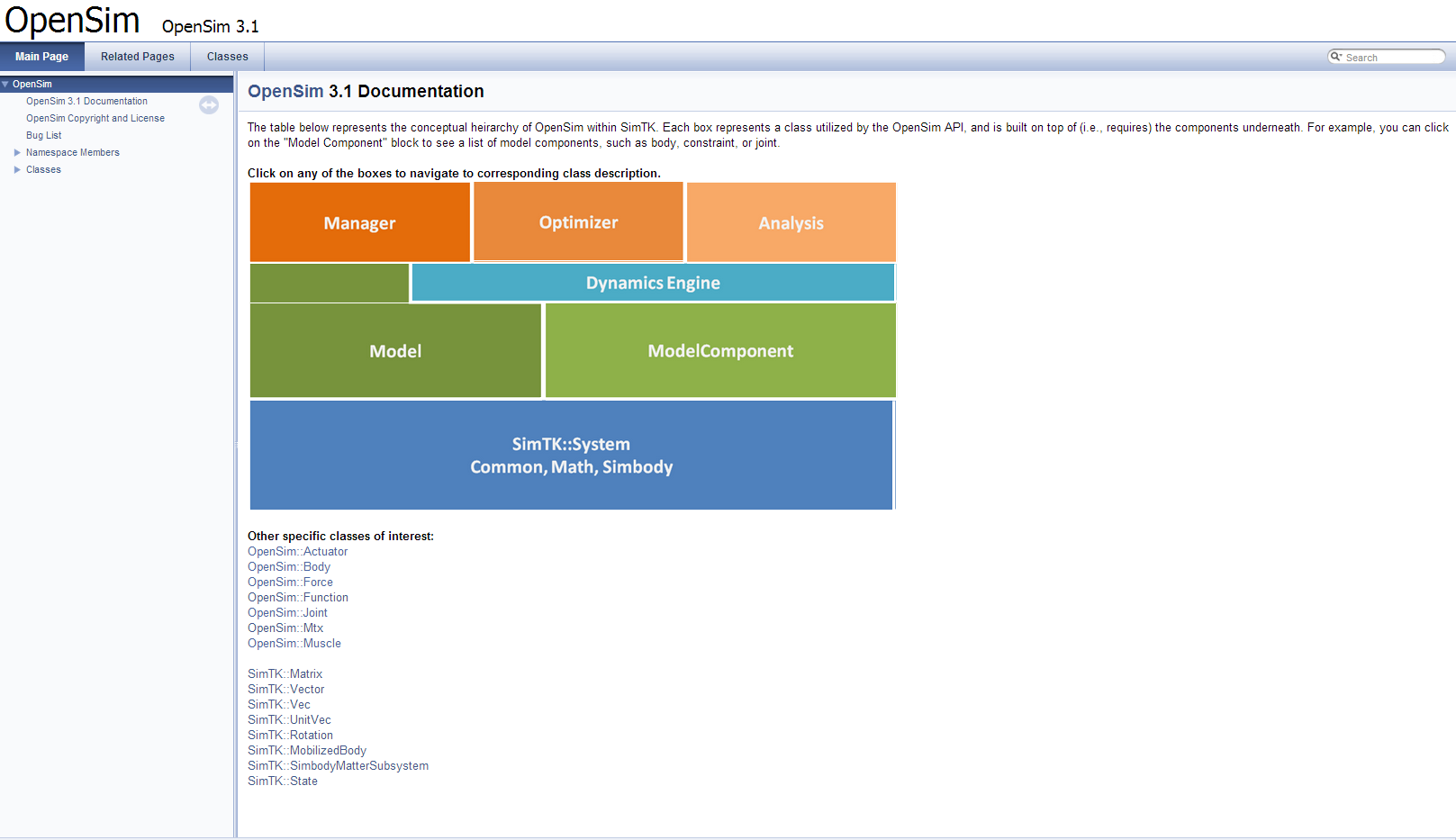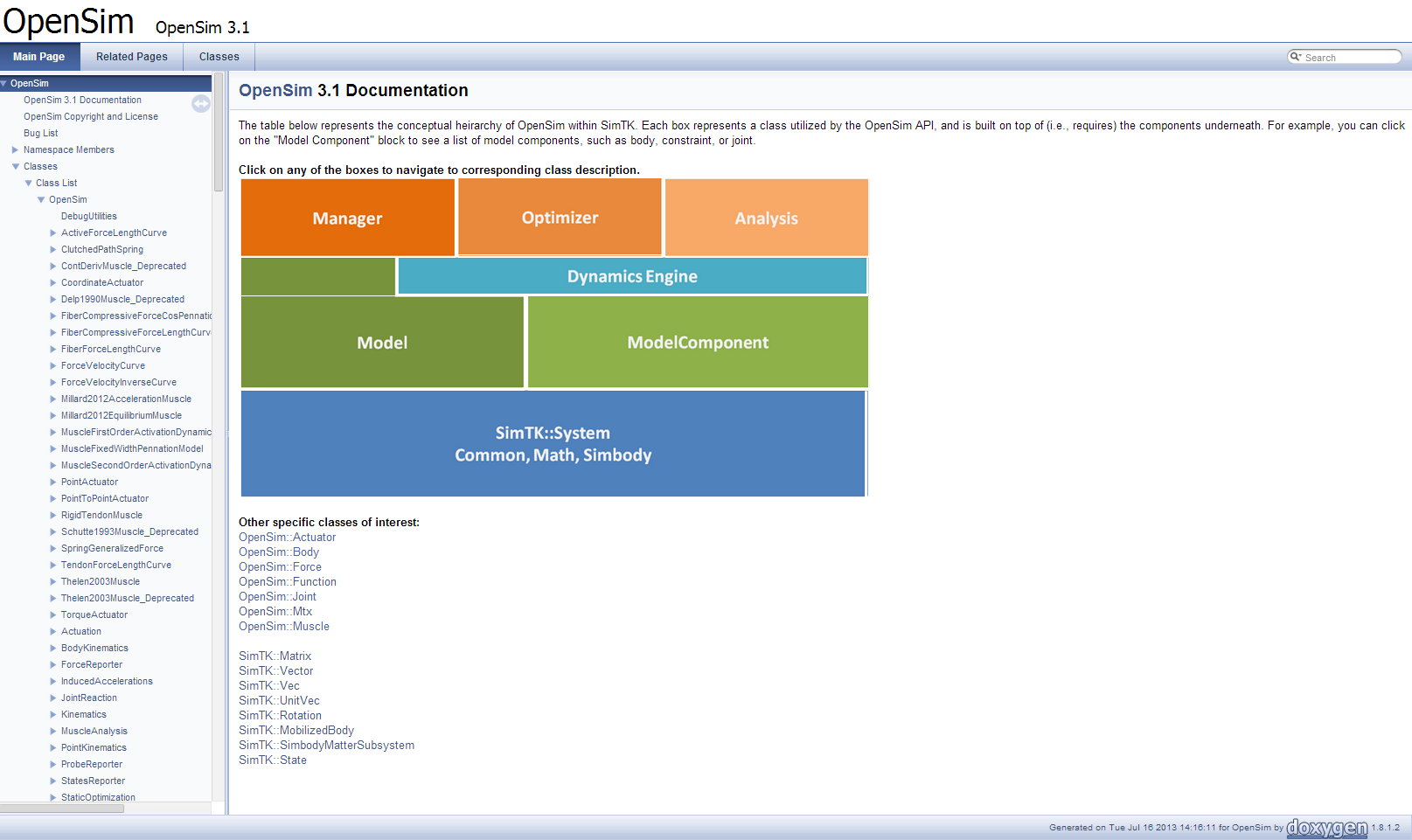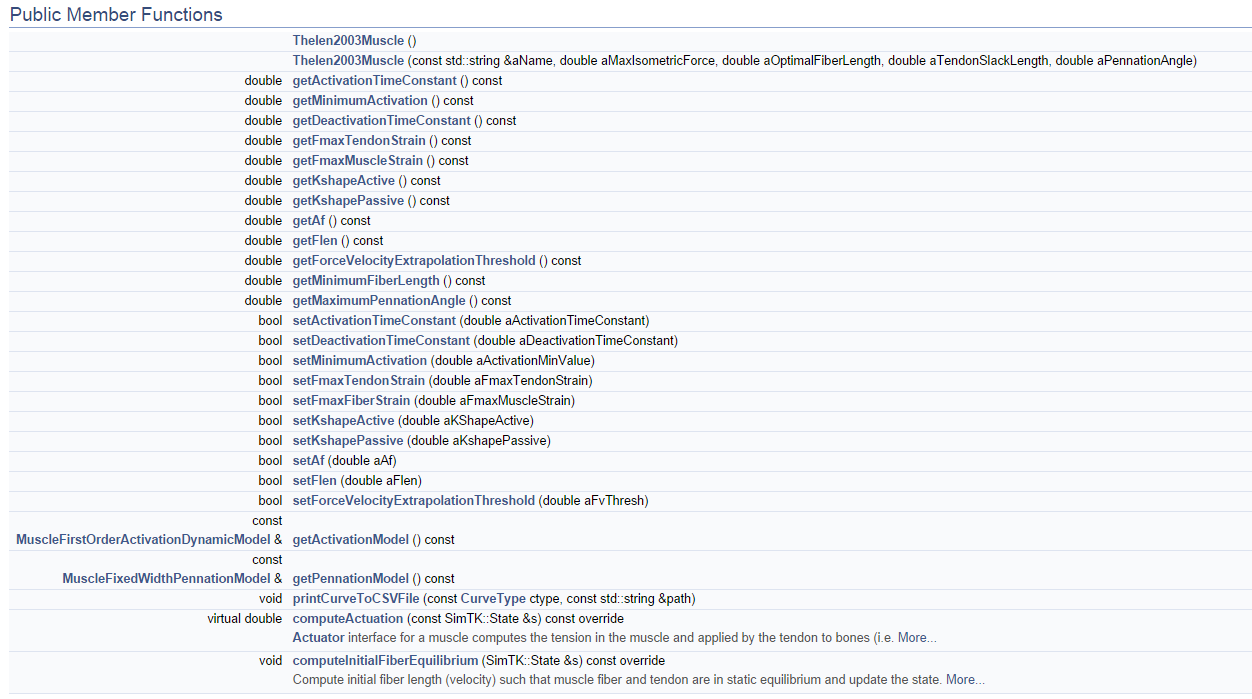Guide to Using Doxygen
Doxygen Navigation
Doxygen HompageThe doxygen homepage gives a top level view of the class groupings and the most popular OpenSim and SimTK classes. From the homepage you can navigate down the Class hierarchy by clicking on blocks that correspond to the Classes that interest you. The search box, located in the top right hand corner, searches through the matching Class names. This is useful if you know the class name but can be limiting if you are trying to discover Classes or methods. If you are trying to discover a method to use we suggest using the OpenSim omnisearch box, which searches through all the OpenSim confluence, forum and doxygen content.
| |
Class ListsThe left hand navigation panel is used move through Class lists, Class Hierachy and Class Members. The flat and hierarchical Class lists show all of the API classes and give you the opportunity to discover new Classes. |
Parts of the Doxygen Page
Once you navigate to a Class of interest, you will find several sections.
Class HierarchyClass Hierarchy diagrams display the inheritance of methods from abstract to concrete Classes. For example, a Muscle() is a PathActuator() and inherits all the functionality of a PathActuator() while the Thelen2003Muscle() is a Muscle() and inherits all the functionality of the Muscle() Class. | |
Constructor MethodMethods and inputs to build an instance of a class. When given no inputs, indicated by empty brackets, a default instance of the class is created. | |
Member FunctionsPublic member functions list all the available methods. Public member functions are easily accessible, especially in Matlab and python. Protected member functions are generally not accessible by users and are rather used in development of new classes |
OpenSim is supported by the Mobilize Center , an NIH Biomedical Technology Resource Center (grant P41 EB027060); the Restore Center , an NIH-funded Medical Rehabilitation Research Resource Network Center (grant P2C HD101913); and the Wu Tsai Human Performance Alliance through the Joe and Clara Tsai Foundation. See the People page for a list of the many people who have contributed to the OpenSim project over the years. ©2010-2024 OpenSim. All rights reserved.




